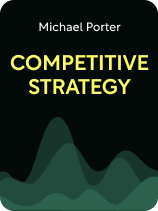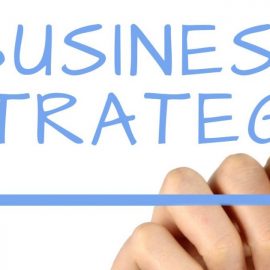

This article is an excerpt from the Shortform book guide to "Competitive Strategy" by Michael Porter. Shortform has the world's best summaries and analyses of books you should be reading.
Like this article? Sign up for a free trial here.
Does your business need revamping? Do you want to gain a competitive advantage in business?
The goal of every business is to outperform its competitors. Competitive Advantage by Michael Porter suggests that you align your operational procedures with one of three strategies: set lower prices, offer something unique, and target niche markets.
Discover how to implement each of these strategies.
Strategy #1: Set Lower Prices
The first strategy for gaining a competitive advantage in business is to set the lowest market prices for your products and services. Porter explains that this strategy attracts price-sensitive customers, safeguards against more expensive substitute offers, and makes it difficult for both existing and new competitors to expand their market share.
To implement this strategy, Porter suggests that you identify areas to reduce operational costs without compromising quality or customer satisfaction. Achieve this by:
- Streamlining operational procedures: Simplify and optimize internal processes to eliminate inefficiencies, reduce waste, and improve productivity.
- Negotiating favorable supplier contracts: Secure more advantageous terms, such as lower prices, extended payment terms, or volume discounts.
- Capitalizing on economies of scale: Maximize cost advantages through increased production or expansion, benefiting from bulk purchasing, efficient resource utilization, and spreading fixed costs over larger output volumes.
| Advice on Reducing Operational Costs Josh Kaufman (The Personal MBA) adds to Porter’s advice by explaining that the best way to reduce costs is to make sure that your business operations are as efficient as possible. The more efficient your operations, the more time and money you save running your business—and the more financially viable it is to charge low prices without compromising on quality or customer satisfaction. According to Kaufman, to optimize your operations, you first need to understand all of the tasks that your business relies on. Consider your product or service and write down all of the steps it takes to: Create it: This includes designing, manufacturing, and ensuring quality control. Market it: This includes your branding and media campaigns. Process orders: This varies depending on whether you deal directly with your customers or use intermediaries to handle your orders. Deliver it: This depends on the nature of your product or service and whether you’re reliant on distribution channels to fulfill your orders. Follow up on it: This includes providing customer support and troubleshooting problems. Once you’ve outlined all of the tasks involved in running your business, consider how you can make incremental improvements to save time, effort, and money. Kaufman suggests considering ways to: Streamline tasks: This might include automating some of the tasks or eliminating unnecessary tasks. Cut costs while maintaining quality: This might include cutting intermediaries out or changing suppliers. Improve processes: This might include investing in resources such as equipment or more employees. Finally, Kaufman suggests prioritizing the improvements that will make the biggest difference to your efficiency and profits. |
Strategy #2: Offer Something Unique
The second strategy for gaining a competitive advantage is to offer something unique to the market. According to Porter, the main advantage of this strategy is that it acts as a defense against buyers looking for the cheapest deal. This is because, without comparable alternatives, buyers have no choice but to purchase from you—even if your prices are high. Additionally, offering something distinctive captures customer attention and cultivates loyalty among those who value uniqueness and are willing to pay premium prices for it.
To implement this strategy, Porter recommends that you invest in innovation and conduct market research to identify opportunities for setting your business apart from the competition. This can involve differentiating your branding, your packaging, your product or service features, or the way you interact with customers.
Strategy #3: Target Niche Markets
The third strategy for gaining a competitive advantage is to target niche markets, focusing on specific customer groups with unique requirements. Porter explains that narrowing your focus deepens your understanding of your customers, which enables you to serve them more effectively than competitors targeting the entire market. As a result, it’s easier for you to establish a strong position within your niche and cultivate a loyal customer base.
To implement this strategy, Porter suggests that you identify underserved customer groups, align your offerings with their needs, and develop targeted marketing campaigns to foster strong relationships within the niche community.

———End of Preview———
Like what you just read? Read the rest of the world's best book summary and analysis of Michael Porter's "Competitive Strategy" at Shortform.
Here's what you'll find in our full Competitive Strategy summary:
- The groundbreaking book revolutionized the field of strategic management
- A guide for businesses seeking to achieve a competitive advantage
- How to anticipate and understand your competitors' strategies






